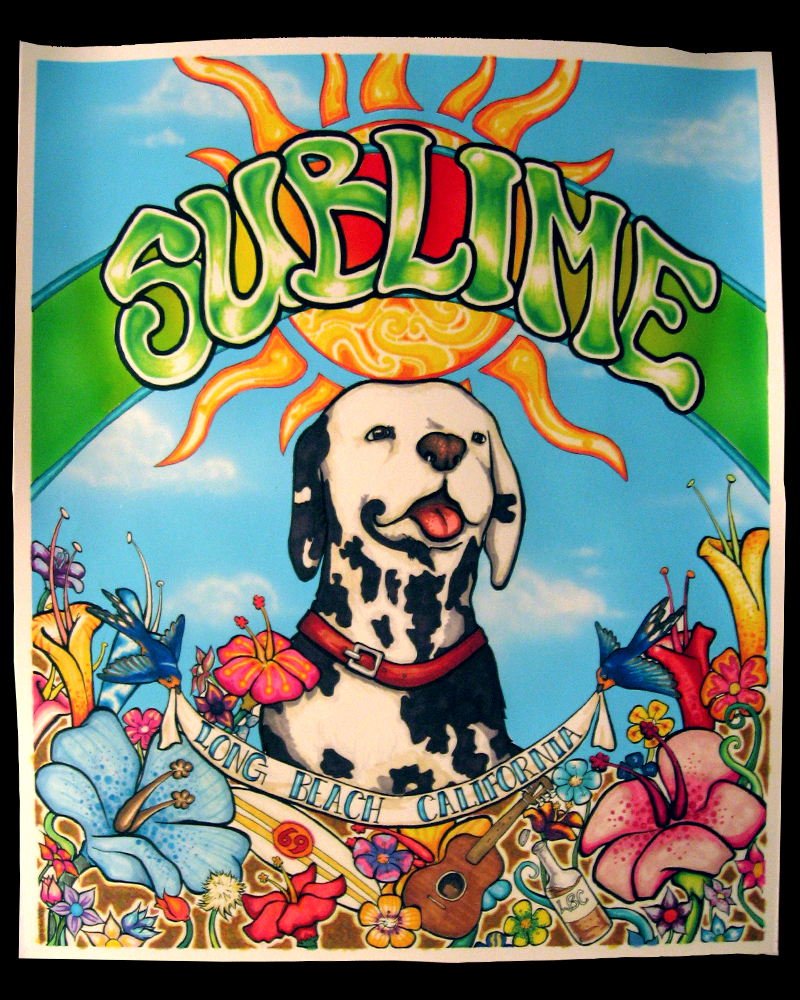

Even Steve Albini’s defunct noise project Rapeman got a nod. And, as the 75-minute record hadn’t sufficiently established the scope of their tastes, they spent its closing track shouting out to all the other acts that they just as easily could have covered if the album ran another hour or two- Butthole Surfers, Fugazi, Frank Zappa, Eek-A-Mouse, Crass, Big Drill Car and on and on and on. Sublime trumpeted their influences proudly, stuffing the album beyond its seams with covers of Bad Religion, Descendents, Toots and the Maytals, and the Grateful Dead, samples of Public Enemy, N.W.A., and Minutemen, and repeated salutes to KRS-One, the rapper Nowell idolized most. to Freedom, their most enduring work and one of the most musically ravenous albums of the ’90s, a countercultural melting pot that extended its hand to skate-punks, surfers, burnouts, tape-trading jam kids, and hip-hop fanatics alike, inviting them all to gather around the same bong. That meant that all roads from Sublime’s crossover hits like “What I Got” and “Santeria” led back to their 1992 debut 40oz.

#SUBLIME BAND CRACK#
Sublime only recorded three albums during their run, and the middle one, 1994’s Robbin’ the Hood, was so haphazard and caustic that only the most devoted fan could tolerate any significant time with it (it was recorded in a crack house, and it sounded like it). Cover bands popped up, too, along with acts that traced the band’s template of breezy Cali reggae-punk so closely that they might as well have been cover bands-an entire cottage industry, cast from Nowell’s footprints.Īll those knockoffs proved poor substitutes for the real thing.

#SUBLIME BAND SERIES#
As Sublime’s popularity ballooned, and their eponymous final album sold by the millions, MCA rushed to capitalize on the seismic demand for a band that no longer existed, clearing the group’s vault with a series of live albums and rarity and greatest hit collections. Yet Nowell’s death left a bigger void than even his loved ones and bandmates could have imagined. “It wasn’t a question of was it going to happen, it was a question of when it was going to happen,” drummer Bud Gaugh recounted. In a “Behind the Music” special years later, those closest to Nowell all framed his death the same way: After battling addiction for so long, he was prepared to die, and maybe even on some level all right with it. That tragic loss effectively ended the band (aside from a reboot in 2009 as Sublime with Rome)-but certainly not their influence, which has since reigned over third-wave ska, rap rock, nu-metal, 21st-century genre-obliterators like twenty one pilots and Post Malone, and even Lana Del Rey.It’s human nature to cling to a comforting takeaway after a tragedy. These restless anthems would prove even more potent in the wake of Nowell’s death from a heroin overdose, just two months prior to the album’s release. With 1996’s Sublime, the band made its launch into the mainstream with career-defining hits “What I Got,” “Santeria,” “Wrong Way,” and “Doin’ Time,” all of which reveal Nowell as a sharp, sincere poet of the times with his evocative tales of unfaithful lovers, broken homes, and the sun-dazed illusion of lovin’ and livin’ easy. Sublime name-dropped Bob Marley and KRS-One, covered Grateful Dead and Toots & The Maytals, sampled Primal Scream and The Doors, and introduced Gwen Stefani (on “Saw Red”) at least a year before No Doubt began their rise out of Orange County. That album and its follow-up, 1994’s Robbin’ the Hood, are scrappy, lo-fi documents of coming-of-age revelations fueled by sex, drugs, and a voracious appetite for rock, reggae, and hip-hop. Sidestepping grunge’s moody rock template, Sublime slipped their hardcore melodies with rocksteady riddims, thick dub bass, furious record scratching, and savvy hip-hop sampling, and unabashedly washed it all down with cans of malt liquor-the titular inspiration for their self-released 1992 debut, 40oz. Coming out of Long Beach, California, the trio of vocalist/guitarist Bradley Nowell, bassist Eric Wilson, and drummer Bud Gaugh joined forces in 1988 and soon led the charge in spreading SoCal punk-an urgent, unruly mix of rebel calls drenched in sun, surf, and stoner philosophy-to unsuspecting suburban homes across the U.S. Sublime’s woozy, skanky ska-punk not only represents the “LBC,” but also ‘90s alternative at its most defiant and decadent.


 0 kommentar(er)
0 kommentar(er)
